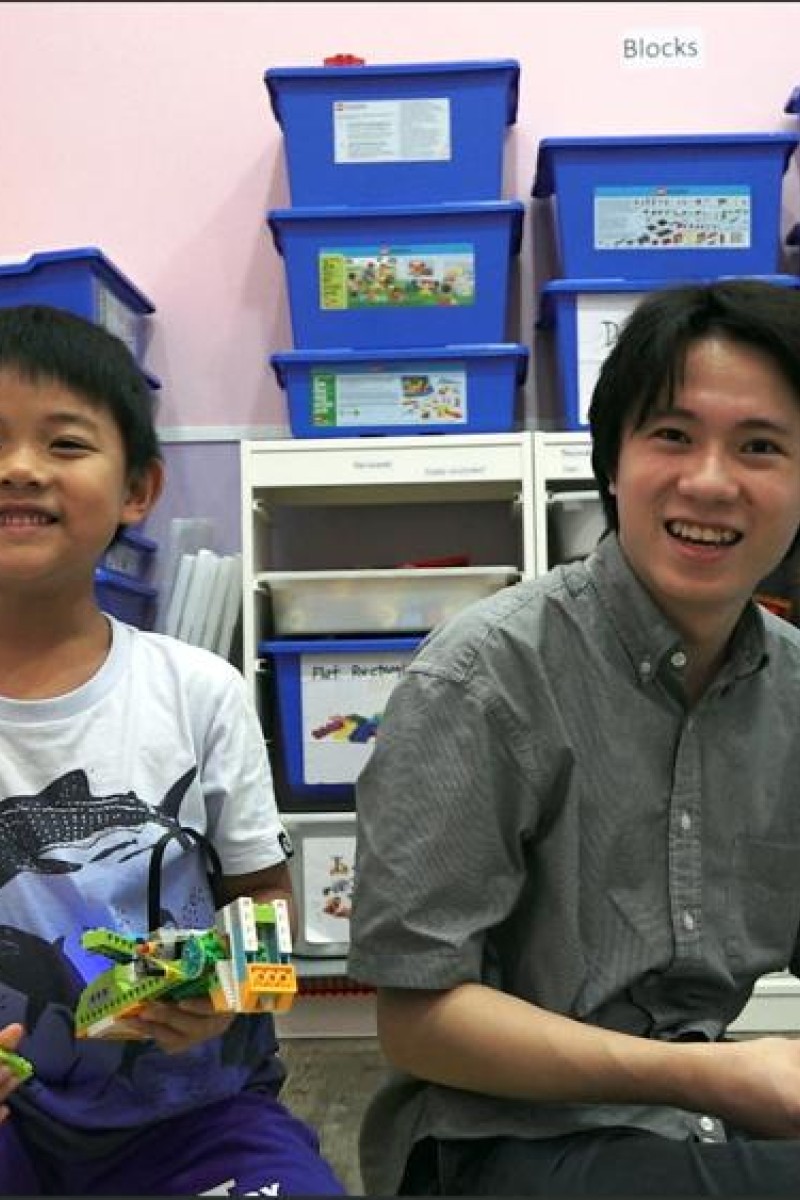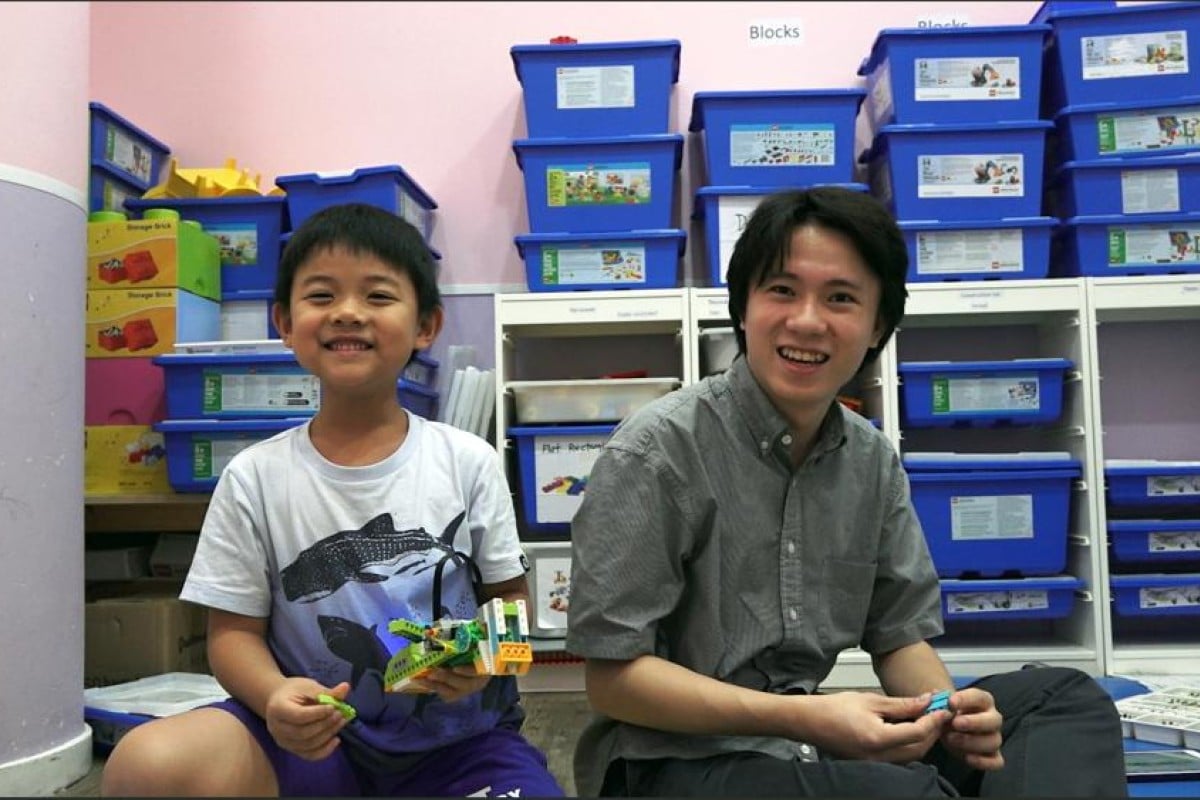
On the job: Lego, creativity, technology and education - Young Post intern learns how to make after-school classes fun
We go back to the classroom to find out what it’s like to be a teacher at a creative learning centre for young children
 Playing with Lego all day? Joshua helps a student during a lesson at Tadpoles.
Playing with Lego all day? Joshua helps a student during a lesson at Tadpoles.After-school classes are very popular in Hong Kong, and young students often spend many hours attending extra tutorials. It’s not just about traditional cram schools, though. There are also many centres in the city offering learning through play, too.
To find out what being a teacher at one of these centres is really like, we followed Richard James Stephens, who teaches at the Tadpoles Learning Centre in Tai Kok Tsui for Young Post’s “On The Job” series. Stephens mainly hosts Lego Education classes at the centre. During these lessons, students learn about robotics, science, and mechanics while playing with Lego.
When we joined the class, I found out that these were no ordinary Lego bricks – they came with electric motors that can be programmed via a tablet.
On the job: Learning about the unexpected jobs that come with working on organic farms
The class was small – there just three students aged six to eight – so Stephens had enough time to help them one-on-one. I sat on the floor with Stephens and helped them follow the instructions on their tablets to build a robotic claw.
They didn’t need my help – they were already pretty much experts and at times were actually teaching me how to put parts together. However, the instructions on their tablets ended quite abruptly, and they were left with just a picture of what the finished product should look like.
Two of the students had no problems continuing to build until what they had looked like the picture, but the last struggled to figure out how to complete the claw.
On the job: A doctor of Chinese medicine shows us the basics of acupuncture and other TCM techniques
It was tempting to just grab the Lego and finish it for her, but that would defeat the purpose of the whole exercise – for her to learn. Instead, I tried to guide her through the steps, and pointed out the shapes she needed to copy from the picture. I ended up arranging the blocks for her so that they matched the diagram and, after a few more attempts, she was able to complete the puzzle.
Once the robot claw was built, the students got a chance to test their creation. Some used their claw to pick up and put away the spare pieces. Others had different ideas for how to use their creation, and used it to squeeze their noses and pull my hair, which was perhaps not so fun for me as it was for them.
Everyone was very excited, and there was lots of laughter. In the end, though, Stephens did a good job of calming everyone down and helping them tidy up. I admired Stephens’ patience, and watching him work helped me understand what type of guidance students respond to best.
On the Job: The surprising challenges of becoming a bubble tea master
There were only two boys in the second class and they were a lot quieter than the excitable students in the first class. They didn’t want to talk to me while they focused on their tasks, even though I tried to engage with them. Stephens tried asking them a few questions – which reminded me of how I conduct interviews as a reporter. However, they were probably put off by the fact that there was a stranger in their classroom. Still, I tried to help where I could.
I thought playing with Lego all day would be great fun, but Stephens told me that the most difficult part of his job was the amount of time he often spends planning each lesson. Teaching requires a huge amount of patience, he told me, as the students work at their own pace and may not always follow the instructions given.
Seeing the students get so excited about their creations was very rewarding, and I can see why people want to become teachers. Still, I don’t think I have the skills and patience to become one. For the sake of all students, I think it’s best I stay out of the classroom.